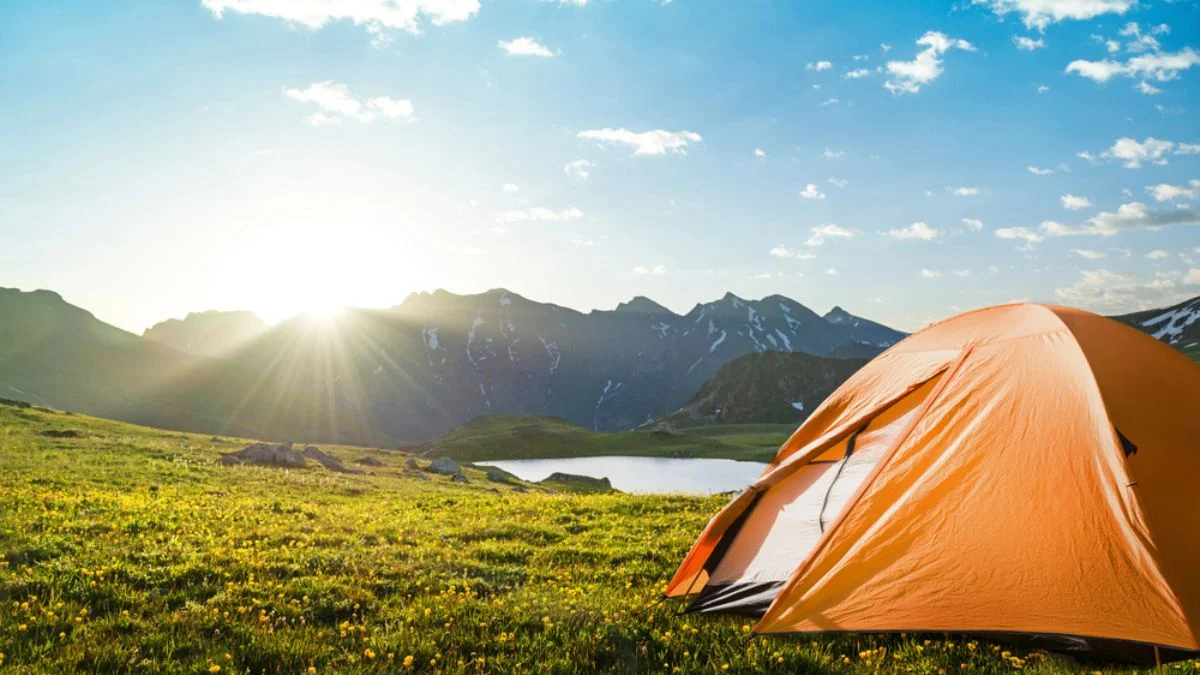20 Essential Camping Must-Haves for Your Next Outdoor Adventure

As participants in Amazon Associates and other programs, we earn from qualifying purchases. This comes at no additional cost to you. For more details, see our Affiliate Disclosure.
Embarking on a camping trip is an exciting journey into nature, offering an opportunity to disconnect from the digital world and immerse oneself in the tranquility of the great outdoors. However, to ensure your adventure is both enjoyable and safe, it’s crucial to be well-prepared. This guide outlines the top 20 camping must-haves, from reliable shelter options to versatile cooking gear, that are indispensable for any camper, whether you’re a seasoned explorer or a first-time adventurer. Discover the essentials that will enhance your camping experience, making it not just memorable but also comfortable and hassle-free.
High-Quality Tent with Rainfly
A high-quality tent equipped with a rainfly is your primary line of defense against the elements, ensuring a dry and comfortable refuge in the heart of nature. It’s not just about having shelter; it’s about having a reliable sanctuary that can withstand wind, rain, and even light snow. The right tent should be spacious enough to accommodate the number of campers, yet compact and lightweight for easy transport. A rainfly, an essential feature, provides an additional waterproof layer, keeping the interior of the tent dry during downpours and offering extra insulation against the cold.
When choosing your tent, consider the seasons you plan to camp in. A three-season tent is versatile, designed for spring, summer, and fall, and engineered to balance ventilation with weather protection. For more extreme conditions, a four-season tent can stand up to harsh winter weather, but it’s heavier and less ventilated. Look for features like sturdy poles, durable fabric, and a quick setup process. Remember, your tent is more than just a place to sleep; it’s your home away from home in the wilderness.
Sleeping Bag Suited for the Season
Selecting the right sleeping bag, one that’s suited for the season, is crucial for ensuring a comfortable night’s sleep in the outdoors. Summer bags are lightweight and designed for temperatures of about 35°F and higher, making them perfect for warm nights. Three-season bags are ideal for temperatures of 20°F to 32°F, offering a balance of warmth without overheating. For winter adventurers, a sleeping bag rated for 20°F or lower is essential, providing the insulation needed to stay warm in freezing conditions.
The type of insulation is another important factor. Down insulation is known for its excellent warmth-to-weight ratio and compressibility, making it a favorite among backpackers. Synthetic insulation, while heavier and less compressible, excels in wet conditions and is generally more affordable. Regardless of the type, look for features like a draft collar, hood, and zipper draft tube to minimize heat loss. Your sleeping bag is your cocoon in the wild, ensuring you wake up refreshed and ready for the day’s adventures.
Sleeping Pad or Air Mattress
A sleeping pad or air mattress is not just a luxury; it’s a critical component of your camping gear that provides insulation from the cold ground and cushioning for a comfortable night’s sleep. Sleeping pads come in various types, including foam, self-inflating, and air pads, each with its own set of benefits. Foam pads are durable and insulating, making them a great choice for rugged conditions. Self-inflating pads offer a balance of comfort and convenience, while air mattresses provide the utmost in sleeping comfort, resembling a bed-like experience in the great outdoors.
Beyond comfort, the insulation provided by a sleeping pad is measured by an R-value, indicating its ability to resist heat flow. Higher R-values offer better insulation for colder conditions. When choosing a pad or mattress, consider the type of camping you’ll be doing, the temperatures you’ll face, and your need for comfort versus portability. With the right sleeping pad, you can turn a rocky, cold campsite into a cozy, inviting space for restorative sleep.
Portable Camping Stove
A portable camping stove is a must-have for any outdoor adventure, offering the ability to cook hot meals and boil water wherever you set up camp. From simple single-burner models perfect for backpackers to more elaborate setups for gourmet camp cooking, there’s a stove to suit every type of camper. Consider fuel types when selecting a stove; propane stoves are easy to use and ideal for car camping, while liquid fuel stoves work well at high altitudes and in cold weather.
The convenience of a camping stove cannot be overstated. It allows for the quick preparation of meals, boiling water for safe drinking, and even warming your hands on chilly mornings. Look for stoves that are compact, lightweight, and easy to ignite, with adjustable flame control for precise cooking. Remember, a good meal can transform a camping trip, turning it from a mere outing into a memorable culinary experience under the stars.
Cooking Utensils and Durable Cookware
Having the right cooking utensils and durable cookware is essential for preparing meals in the great outdoors. Lightweight, durable materials such as aluminum, stainless steel, or titanium are ideal for pots, pans, and utensils, combining functionality with ease of transport. Non-stick surfaces can make cooking and cleanup easier, letting you spend more time enjoying the wilderness and less time scrubbing pots. Consider a nesting cook set, where pots, pans, and utensils compactly fit together, saving valuable space in your pack.
Beyond pots and pans, a comprehensive camp kitchen should include utensils like a spatula, serving spoon, and sharp knife, along with a cutting board, collapsible sink, and a portable coffee maker for those who can’t start their day without a fresh brew. Remember, the goal is to balance the weight and spaceof your gear with the comfort and enjoyment of your meals. Lightweight, multi-use items that can handle the rigors of campfire cooking are ideal. For instance, a spork (spoon-fork combo) and a multi-tool with a can opener are small additions that can make a big difference in your camping experience. Also, collapsible bowls and cups can save space while providing the convenience of home.
Investing in quality cookware and utensils enhances your camping cuisine, making it possible to enjoy a variety of meals, from simple one-pot wonders to elaborate dishes under the stars. The right tools not only make cooking easier but also add to the overall enjoyment of your outdoor adventure. Whether you’re boiling water for morning coffee amidst the mountains or preparing a hearty meal after a long day of hiking, having the proper cookware and utensils is crucial for any successful camping trip. Remember, food is not just sustenance on the trail; it’s a vital part of the camping experience, offering comfort, warmth, and a reason to gather around the campfire.
Reusable Water Bottles and Hydration System
Staying hydrated is paramount in the outdoors, and having a reliable reusable water bottle or a comprehensive hydration system ensures you maintain water intake without harming the environment. Reusable bottles come in various materials, including BPA-free plastic, stainless steel, and aluminum, each offering durability and safety for drinking water. For those on the move, a hydration system, such as a water bladder with a drinking hose, allows for easy access to water without having to stop and reach for a bottle.
In addition to carrying water, consider a portable water filter or purification tablets for sourcing water from natural bodies. This is especially important in remote areas where carrying all necessary drinking water isn’t feasible. A good hydration system not only supports your physical performance but also minimizes the risk of dehydration, which can be dangerous in outdoor settings. Always plan for more water than you think you’ll need, ensuring you’re well-prepared for any situation.
First Aid Kit
A well-stocked first aid kit is an indispensable part of any camping gear, prepared to address minor injuries, cuts, blisters, and other common outdoor ailments. Your kit should include basics like adhesive bandages, antiseptic wipes, gauze pads, adhesive tape, and scissors, along with specific items like tweezers for splinters, insect sting relief pads, and a CPR mouth barrier. Tailor your first aid kit to the nature of your trip and the specific needs of your group, considering any personal medications or allergy treatments.
Beyond just having a first aid kit, familiarity with its contents and knowledge of basic first aid practices are crucial. Consider taking a first aid course as part of your trip preparation. In the wilderness, where professional medical help may not be immediately accessible, a properly used first aid kit can prevent a minor injury from becoming a major problem, ensuring the safety and well-being of all campers.
Multi-Tool or Swiss Army Knife
A multi-tool or Swiss Army knife is the epitome of functionality and versatility in a compact form, making it an essential item for any camper. With a variety of tools packed into one device, including knives, screwdrivers, can openers, scissors, and sometimes more specialized tools like saws or wire strippers, it can tackle a myriad of tasks around the campsite. From preparing food and repairing gear to emergency situations where a specific tool is needed, a multi-tool can be invaluable.
Choosing a multi-tool or Swiss Army knife depends on your specific needs and the activities you plan to engage in. Weight and size are important considerations, as is the selection of tools. Ensure it’s made from high-quality, durable materials capable of withstanding the rigors of outdoor use. Having this versatile tool at hand can make the difference between a frustrating inconvenience and a swiftly resolved situation.
Portable Lighting (Headlamps, Lanterns)
Portable lighting, such as headlamps and lanterns, is essential for navigating the campsite after dark, cooking meals, or reading in your tent. Headlamps offer hands-free convenience, making them perfect for tasks that require both hands. Look for models with adjustable brightness settings and a red light mode, which is less disruptive to night vision. Lanterns provide ambient lighting to illuminate a larger area, creating a cozy atmosphere for evening activities.
Both lighting options should be durable, weather-resistant, and capable of lasting through the night on a single charge or set of batteries. Rechargeable models or those with solar charging capabilities offer an eco-friendly alternative to disposable batteries. Remember, the wilderness does not have streetlights; portable lighting is your source of visibility and safety during the night.
Waterproof Matches or Lighter
The ability to start a fire is essential for warmth, cooking, and emergency signaling, making waterproof matches or a reliable lighter critical components of your camping gear. Waterproof matches are specially treated to ensure they ignite in wet conditions, providing an indispensable backup in case of rain or dampness. Alternatively, a waterproof lighter or storm-proof matches offer a more durable solution, capable of withstanding extreme weather conditions.
When selecting your fire-starting tools, consider redundancy; having both matches and a lighter can ensure you’re never without a means to start a fire. Store them in a waterproof container as part of your emergency kit. Remember, the ability to make fire can be a lifeline in the wilderness, providing not only physical warmth but also psychological comfort.
Navigation Tools (Map, Compass, GPS)
In the age of digital technology, the importance of traditional navigation tools like a physical map and compass cannot be overstated. These tools do not rely on battery power or signal reception, making them reliable in even the most remote or rugged locations. A map specific to the area you are exploring is essential for planning routes and identifying landmarks. Complementing this with a compass allows for orienteering and navigating even when trails are not clearly marked.
For those who prefer modern convenience, a GPS device offers precise location tracking and can store detailed maps of various regions. However, it’s crucial to carry a map and compass as backups, as electronic devices can fail due to low battery, damage, or loss. Familiarize yourself with all your navigation tools before your trip; understanding how to use them effectively can be the difference between a successful adventure and a challenging ordeal.
Environmentally Friendly Soap and Cleaning Supplies
Using environmentally friendly soap and cleaning supplies is crucial while camping to minimize your impact on the natural surroundings. Biodegradable soap is designed to break down naturally in the environment, reducing the risk of harm to wildlife and ecosystems. When washing dishes, bathing, or cleaning up, always do so at least 200 feet away from streams, lakes, and rivers to prevent contamination of water sources.
In addition to soap, consider eco-friendly alternatives for other cleaning needs, such as reusable cloth towels instead of disposable paper ones and natural sponges. Packing out what you bring in, including water used for cleaning, is a fundamental principle of Leave No Trace camping. By choosing environmentally responsible products and practices, you contribute to the preservation of the natural beauty and health of our planet.
Insect Repellent and Sunscreen
Insect repellent is essential for protecting against bites from mosquitoes, ticks, and other pests that can transmit diseases. Look for repellents containing DEET, picaridin, or natural ingredients like oil of lemon eucalyptus for effective protection. Apply as directed, especially during dawn and dusk when insects are most active. Similarly, sunscreen is vital for shielding your skin from harmful UV rays, reducing the risk of sunburn and long-term skin damage. Opt for a broad-spectrum sunscreen with a high SPF and water-resistant properties, reapplying every two hours or after swimming or sweating.
Both insect repellent and sunscreen are crucial for your comfort and health while outdoors. They not only prevent immediate discomforts like sunburn and insect bites but also protect against more severe consequences like Lyme disease and skin cancer. Always include these in your pack, regardless of the season, as sun exposure and insects can be a concern year-round.
Weather-Appropriate Clothing and Layering Pieces
Selecting weather-appropriate clothing and utilizing layering techniques are key to staying comfortable in the outdoors. The layering system typically consists of a base layer for moisture management, a middle layer for insulation, and an outer layer for protection against wind and rain. This system allows you to adjust your body temperature easily as conditions change throughout the day. Opt for materials that wick moisture away from the skin, provide warmth even when wet, and shield you from the elements.
Consider the climate of your destination and pack accordingly. Lightweight and breathable fabrics are ideal for hot and humid conditions, while wool or synthetic insulation is better suited for cold weather. Don’t forget accessories like hats, gloves, and waterproof gear. Proper clothing is your first defense against the elements, making your camping experience more enjoyable and safer.
Sturdy Hiking Boots or Shoes
The importance of sturdy hiking boots or shoes cannot be overstated for outdoor adventures. They provide the necessary support, protection, and traction on various terrains, from smooth trails to rugged, rocky paths. Look for footwear that fits well, offers adequate ankle support, and has a rugged sole with good grip. Waterproof or water-resistant materials are also beneficial, keeping your feet dry during wet conditions.
Breaking in your hiking boots before a trip is crucial to avoid blisters and discomfort. Consider the type of hiking you’ll be doing and choose shoes or boots that match those needs. Lightweight shoes may be sufficient for short, easy trails, while more demanding treks might require the durability and support of boots. Your feet are your primary mode of transportation in the wilderness, so investing in quality footwear is investing in the success of your adventure.
Backpack or Daypack for Hiking
Choosing the right backpack or daypack for hiking is crucial for carrying your essentials comfortably throughout your adventure. The ideal pack should fit your body well, with adjustable straps to distribute weight evenly across your shoulders and hips, minimizing strain and fatigue. Capacity is also key; a daypack typically ranges from 10 to 30 liters, sufficient for day hikes, while multi-day treks require larger backpacks with capacities upwards of 50 liters to accommodate extra gear, food, and clothing. Look for features such as multiple compartments for easy organization, hydration reservoir compatibility, and durable, water-resistant materials to protect your belongings from the elements.
Comfort, durability, and functionality should guide your choice. Try on several models with weight to simulate how the pack will feel when loaded. Ventilated back panels, padded shoulder straps, and hip belts enhance comfort on longer treks. A well-chosen backpack becomes an extension of your body, efficiently carrying everything you need without hindering your mobility or enjoyment of the hike.
Biodegradable Waste Bags
Biodegradable waste bags are an essential item for responsible camping and hiking, allowing you to minimize your environmental impact by properly disposing of trash and human waste. These bags are designed to decompose naturally, breaking down into carbon dioxide, water, and biomass without leaving harmful residues in the environment. When nature calls or when you need to pack out trash, biodegradable bags provide a sanitary and eco-friendly solution.
Always follow Leave No Trace principles by packing out everything you bring in, including food scraps, wrappers, and any other waste. Use biodegradable bags for human waste in areas where burying is not allowed or possible. This practice not only keeps the natural area clean for wildlife and future visitors but also ensures that you’re contributing to the preservation of these spaces for generations to come.
Portable Charger or Solar Charger
In today’s connected world, keeping your electronic devices charged while on the trail can enhance your safety and enjoyment. A portable charger or solar charger is a must-have, ensuring that your smartphone, GPS, and other gadgets remain functional throughout your journey. Solar chargers are especially useful for longer trips where access to power outlets is limited, harnessing the sun’s energy to keep your devices powered.
When selecting a charger, consider the capacity (measured in mAh) to ensure it meets your needs, the weight and size for portability, and the types of ports to match your devices. Solar chargers should be efficient and able to charge devices quickly in full sun. Remember, while technology can greatly aid in navigation and emergency situations, it’s also important to carry traditional navigation tools and understand basic wilderness survival skills as backups.
Emergency Whistle and Mirror
An emergency whistle and signal mirror are lightweight, simple tools that can be lifesavers in emergency situations. A whistle can be heard far beyond the range of the human voice, allowing you to signal for help without expending much energy. Look for a pealess whistle, which works well even when wet. A signal mirror can be used to reflect sunlight, creating a visible signal that can be seen for miles by rescuers or other hikers.
Both items should be an integral part of your emergency kit, kept in an easily accessible place on your person or in your pack. Practicing how to use these tools before you head out can also make a significant difference in an emergency. Remember, in many outdoor survival stories, being able to effectively signal for help has been the key to a successful rescue.
Compact Binoculars or a Telescope
For nature enthusiasts, bird watchers, or anyone who simply appreciates the beauty of their surroundings, compact binoculars or a small telescope can greatly enhance the outdoor experience. Binoculars allow you to observe wildlife, scenic vistas, and distant landmarks up close, adding depth to your adventure. A small, portable telescope, on the other hand, can open up the wonders of the night sky, turning a camping trip into an astronomical expedition.
When choosing binoculars, consider the size, weight, magnification power, and optical quality. Compact models are preferable for hiking, balancing portability with performance. For telescopes, reflector or refractor models that are designed for ease of transport and setup are ideal for stargazing enthusiasts who travel to remote locations. Both binoculars and telescopes can transform a simple outdoor trip into an exploration of the natural world’s hidden details and vastness.






